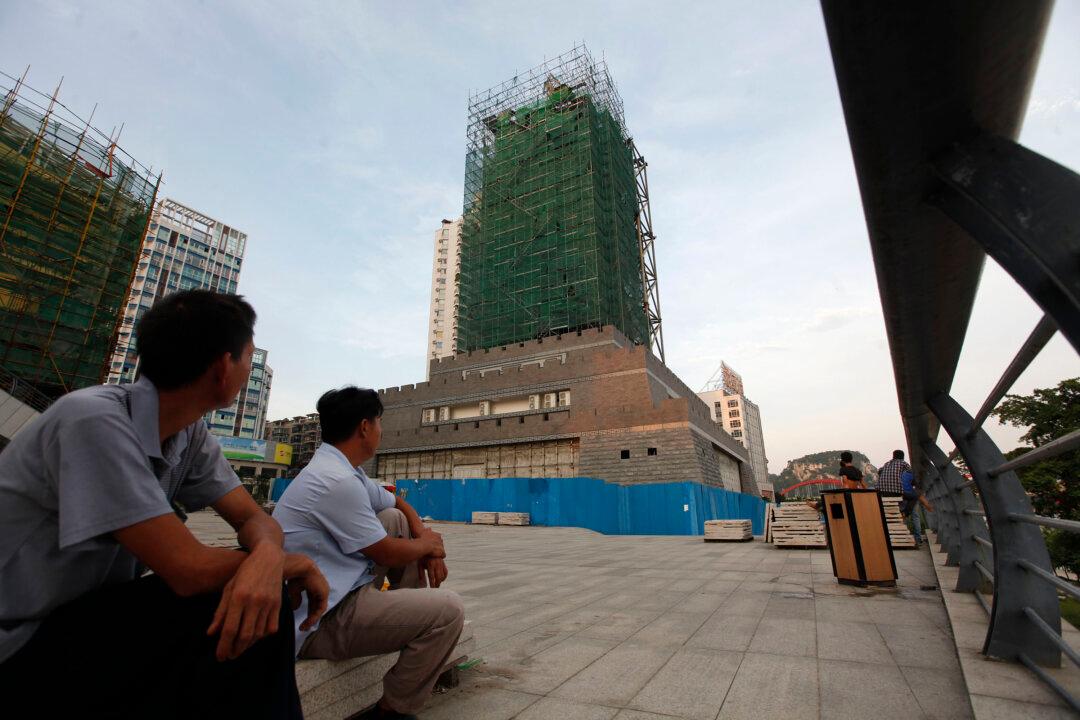Most of the major skyscraper construction projects in China have been halted or delayed, fueling concerns about the dire consequences for the country’s economy amid a real estate crisis.
According to an article published on March 12 by the Chinese portal site NetEase, construction has been halted on 19 out of 31 major skyscrapers across numerous cities and provinces in China, leaving them in a stalled or abandoned state. The others are still under construction but have been in a prolonged initial stage for years.
The Shufeng 468 Building in Chengdu, Sichuan Province, was initially planned to be completed in July 2012. However, construction has been suspended, leaving the remaining 20 meters unfinished. Debt-ridden property giant Greenland Group invested 12 billion yuan (about $1.67 billion) in the project.
Since 2018, Wuhan, Hubei has had four ongoing skyscraper projects, involving tens of billions of dollars in investment. One of which, Chushang Mansion, has been halted for years and is now abandoned. The other three buildings have reportedly been under construction for several years, but there is no sign of any process.
Evergrande City Light in Ningbo, Zhejiang province, was built in 2011 with a total investment of about 13 billion yuan (about $1.8 billion). With a height of 450 meters (1476 feet), the project was once in the spotlight and was scheduled to be completed in 2026. However, after Evergrande went bankrupt, the building was abolished.
Some skyscrapers under construction have been scaled back from their planned initial heights and are being delayed indefinitely.
In Guangdong Province, Shenzhen Hubei Tower was cut from 838 meters (2749 feet) to 499 meters (1637 feet), and only a few dozen meters have been built since 2022. The Shenzhen-Hong Kong International Center has been reduced to 600 meters (1968 feet) from its planned 700 meters (2296 feet) and has ceased construction.
The height of Guangzhou’s Twin Towers was reduced from the previously confirmed 530 meters (1738 feet) to 230 meters (754 feet).
These commercial skyscrapers are located in the heart of cities and will not be able to recoup their costs once they are put on hold. “This is an inevitable outcome of the bursting of the bubble in the entire real estate market,” according to China current affairs commentator Wang He.
Mr. Wang told The Epoch Times that the whole Chinese real estate industry has been pursuing expansion for decades but “building these skyscrapers is one manifestation of the boom at that time. Unfortunately, it has now become a sacrifice.”
CCP Vanity Projects
Li Hengqing, a U.S.-based economist, said that Chinese society is regime-oriented and that these high-rise buildings can be more than construction projects as they often attempt to embody the image of CCP government officials and their achievements.“Governors are mostly interested in grandiose achievements, like building their monuments with high-rise buildings and their so-called image projects, which are, in fact, a waste of manpower and resource.”
Mr. Li indicated that it was the CCP regime’s fault that these costly skyscraper projects have failed. He doesn’t think there is a remedy for such a situation, so those uncompleted projects will remain idle for a long time.

Since 2021, Chinese real estate giant Evergrande has defaulted on as much as 2.4 trillion yuan (about $330 billion) in debt, kicking off a wave of bankruptcies and the collapse of Chinese real estate companies.
As of Aug. 24, 2023, over 30 prominent Chinese real estate developers had incurred large debts, which include Country Garden’s debts of 1.43 trillion yuan ($190 billion), Vanke’s debts of 1.35 trillion yuan ($180 billion), Greenland’s debts of 1.2 trillion yuan ($160 billion), Poly Real States’s debt of 1.14 trillion yuan ($150 billion), Sunac China’s debts of 1 trillion yuan ($139 billion), China Resources Land’s debts of 739.6 billion yuan ($102 billion), and Longfor Properties’s debts of 572.4 billion yuan ($79.5 billion).
Those astronomical debts have punctured the real estate bubble, according to Mr. Li.
Meanwhile, the proliferation of unfinished construction projects, uncollectible bank loans, plummeting land prices, and public fear that homeownership means negative equity, all of which paint a picture of a real estate market that has lost its vitality.
“The real estate collapse had a wide-ranging impact on the Chinese economy and may even bring it to a standstill.” Mr. Li noted.






